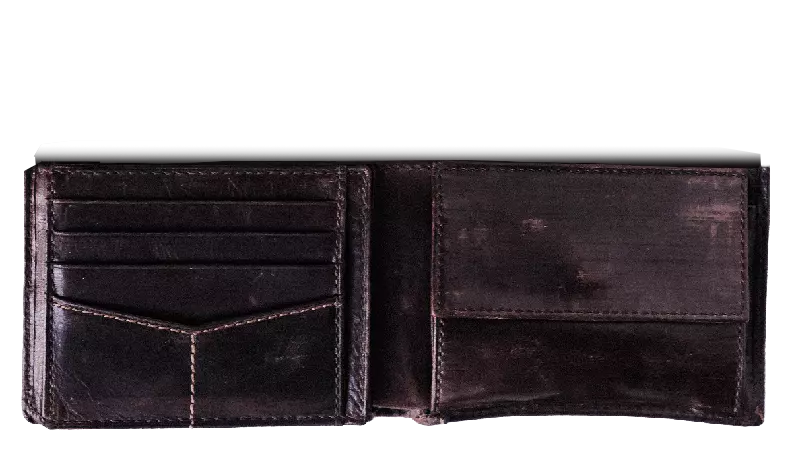Who’s in Your Wallet?
A visual essay about the famous figures who represent today’s currencies around the world






If you open your wallet right now, who do you see there? You’re probably looking at people who made history in your country. Without even noticing, you’re always carrying around reminders of prominent people in your wallet, but have you ever wondered, who gets to be on banknotes?
In many places, paper money still fails to represent a portion of the population it serves, with many countries preferring to showcase people (usually men) in positions of power or of national acclaim on their banknotes. However, money can also be a platform to uplift the unsung leaders who deserve our gratitude for making our countries what they are. We decided to investigate this imbalance. We gathered data about the people who appear on banknotes around the world, to see what we could learn about them and their countries.
We wanted this analysis to be as international as possible so we inquired into 38 countries from all 22 sub and sub-subregions of the world, based on the United Nations’ Statistics Department geoscheme. Our dataset represents:
236
241
The majority of the individuals depicted on banknotes are male:
We looked at their professions and accomplishments, among other characteristics, to understand who is featured on the banknotes of the world, and what it took to get there.
Odds are the person on that banknote is a writer, not a politician
Occupations of individuals portrayed on banknotes
Here we can see the full gender breakdown of women and men across each occupation.
19% of people featured on banknotes are Writers (45 people from 23 countries).
Writing was the most common profession among women and the second most common for men.
Some notable figures in this category include Colombia’s first Nobel Prize of Literature winner Gabriel García Márquez, the pioneer of Japanese modern literature Ichiyo Higuchi and Turkish writer Fatma Aliye Topuz, who is known as the first female author in the Islamic world.
Writers can give voice to a place, time, and culture in a way that can resonate and instill a sense of shared identity among citizens, perhaps making them such a popular choice to feature on banknotes.
While writers seem like a safe choice to be on banknotes, they can also cause controversy. For instance, Israel exclusively features “Hebrew poets whose life stories, works, and activities are intertwined with the story of the rebirth of the Nation of Israel in its land,” according to the Bank of Israel website.
Yet, many decry that the current Israeli series only represent Ashkenazi Jews and don’t include anyone of Sephardi or Mizrahi heritage, an exclusion that some hope will be solved in following editions.
The second most common profession in the dataset is Head of Government, which only features one woman: Corazon C. Aquino.
She was president of the Philippines from 1986 to 1992 and is known for restoring democracy after the dictatorship of Ferdinand Marcos.
There are only four female Politicians featured on banknotes and three of them were the first women to hold a specific government role: Rose Lomathinda Chibambo, the first female cabinet minister of Malawi, and Agnes Macphail and Edith Cowan, the first elected women to the parliaments of Canada and Australia respectively.
Not a single country we analyzed featured a woman who is considered the founder of their nation.
Instead, women who were involved in independence wars are often called “National Heroes” or revolutionaries.
For example, the Venezuelan central bank writes that Josefa Camejo is a heroine of the independence movement, while the descriptions of her male contemporaries pictured on the banknotes include “father of the nation” and “leader.”
We classified monarchs as separate from heads of government because oftentimes they don’t play that role.
There are just 12 monarchs featured on banknotes and only two of them are women: Queen Elizabeth II and Queen Tamar of Georgia.
We acknowledge that heads of government, politicians, founders, and monarchs are all involved in governance in some shape or form and therefore could be counted together. Doing so would yield 103 unique individuals in this category (on 34 out of the 38 currencies). In other words, 42% of all the individuals we analyzed can be thought of playing a role in governance broadly defined. Writers would still be a top profession, coming in second place.
Being known as the first person to do something can get you on a banknote
On average, 29% of people in a country’s currency were known for being the first ones to do something, whether it was being the first of their demographic to be a member of Congress, the first president of a nation, or the first Indigenous person to graduate from a national university. These are just some of the “firsts” that are featured on banknotes in this dataset.
Here are a few notable “firsts” who appeared on banknotes
Notable “Firsts” Honored on Banknotes
If your face does end up in a banknote, how much will it be worth?
We were curious to see whether there was any pattern between the gender of a featured individual and the relative value of the banknote. We found that the distribution across bill values was roughly the same. Similarly, there is no significant relationship between profession and bill value in this dataset.
Distribution of bill values are similar by gender (normalized within country)

However, there are some countries that intentionally assign a particular individual to a particular banknote value. This is the case of Sweden as they thoughtfully decided that Astrid Lindgren, the author of the children’s books about Pippi Longstocking, would be on the 20-note krona.
The bank’s website says: “Astrid Lindgren appears to be the person most popular as a motif among the general public. The committee therefore suggests that she should be on the banknote that is used most in the retail trade, which is the 20-krona note. This is also the banknote most likely to be used by children.”
Unfortunately, you probably won’t see yourself on a banknote in your lifetime
Only 10 people were alive to see themselves on banknotes. 96% of the banknotes were issued after the person on them had died.
How many years between death and appearance on banknote?
Hannibal, the famous Military Commander from ancient Carthage and face of the Tunisian dinar, died in 183 BCE, which makes him the oldest person in our dataset. Hannibal first appeared on the dinar in 1993. The current 5 dinar banknote with Hannibal on it was put into circulation in 2013.
South Korea, on average, featured the oldest historical figures: all four of them lived in the 13th and 14th centuries.
For a third of the featured individuals, it took centuries to get issued on a banknote. Eighty-one people died more than 100 years before their faces appeared on the current legal-tender.
The shortest waiting time for someone to be put on a banknote after their death was just one year, and this was only the case for four people: Gabriel García Márquez of Colombia, General Murtala Mohammed of Nigeria, Corazon C. Aquino and Manuel A. Roxas of the Philippines.
All four of these people were notable “firsts” as well. We found that people who were known for a “first” were issued on a banknote sooner than those who were not notable “firsts.”
Among the 10 people who were alive to see themselves on a banknote, only Queen Elizabeth is still alive today (therefore, she isn’t represented in this graph).
Some countries have gone a step further by creating laws that make specific stipulations about who can be featured on bills. The United States Treasury makes it clear that only deceased persons are legally allowed to be on the currency. The same is true for The Bank of England and Canada (though both make an exception for the Monarch), with Canada going a step further and insisting the individual must have been dead for at least 25 years. England and Canada both also prohibit fictional characters from appearing on banknotes.
Some final thoughts
From our analysis, it’s clear there’s still much work to be done to create more representative banknotes. A few governments are attempting to do this. Four countries portray an activist and nine others portray revolutionaries who fought to overthrow their oppressors. The Mirabal sisters, pictured on the Dominican Peso, created a political movement that opposed the former dictator’s sexist and violent policies and fought for civil rights. Tragically, they were assassinated by the dictator’s henchmen in 1960. In 2007, 47 years later, the Mirabal sisters were introduced to the peso as symbols of democratic and feminist resistance.

The U.S. Treasury is trying to address some of its racist and sexist history by featuring Harriet Tubman as a replacement of Andrew Jackson on the $20 bill, but this attempt was delayed by former President Donald Trump, who is reportedly a fan of the seventh U.S. President. Indeed, the delay was a political move as Trump admitted that he was against changing the bill because he considers this change “pure political correctness.”
Elsewhere, to avoid controversies, many currencies are moving away from portraits and instead displaying architecture, flora and fauna on their bills. Some currencies that have made that change include the Danish krone, the Euro and the Swiss Franc.
While it’s unclear whether more currencies will move towards faceless banknotes, their legacy and historical value will remain a subject of study and a source of heated discourse. So, now when you look at banknotes, we hope you won’t see just little pieces of paper but rather symbols of power itself–spending power, political power, ideological power and more.
The next time you exchange cash, in your native country or a new one, what will you notice about the design and whose history is being represented?
Since we wanted to learn more about the specific people on banknotes, we narrowed our investigation to banknotes with non-generic people on them. This means that the country has explicitly said that the portrait on the banknote belongs to a specific person and it’s not an unspecified representation of a villager, a woman, a fictional character, etc.
Another condition we followed was to only count circulating banknotes that aren’t being recalled. This way we are only looking at bills that are and will continue to be legal tender for the foreseeable future.
We drew inspiration from a 2016 article by Vox about women on world banknotes. Since then, the data has changed so we collected updated numbers for this article.
Please remember that the conclusions and statistics presented in this article are only applicable for the countries analyzed. Collecting updated data on world banknotes is difficult because there isn’t a centralized governing body that keeps up-to-date records. Another limitation was that we are only proficient in English and Spanish but some countries' central bank websites weren’t available in those languages so we couldn’t cross-reference the data.
If you would like to do extra research on the topic, refer to Standard Catalog of World Paper Money 25th Edition or Wikipedia’s list of people on banknotes but again, remember these resources aren’t updated all the time and you might have to cross-reference with other resources. Many countries keep thorough records of their money on their central bank’s website so that is a good resource too.